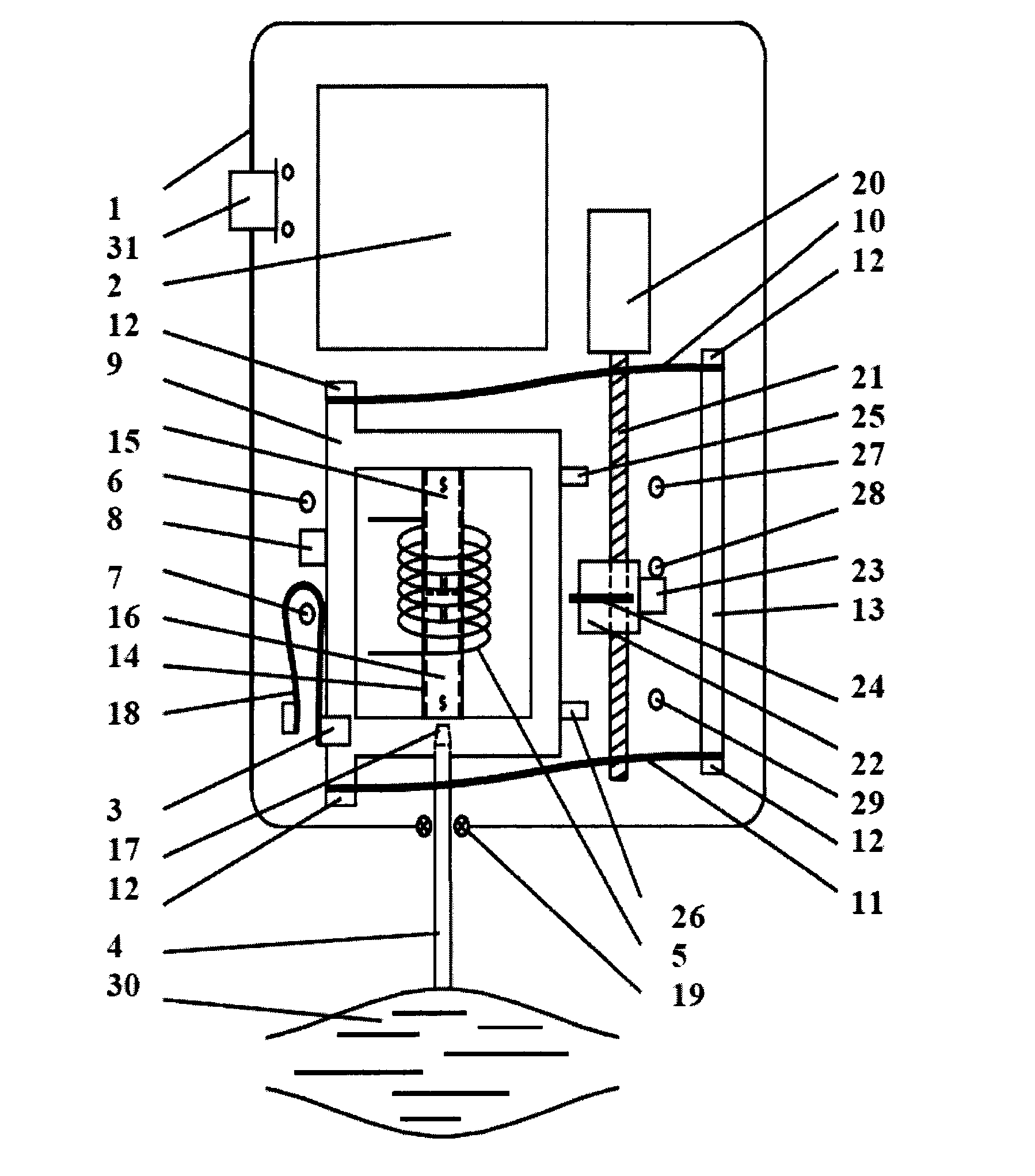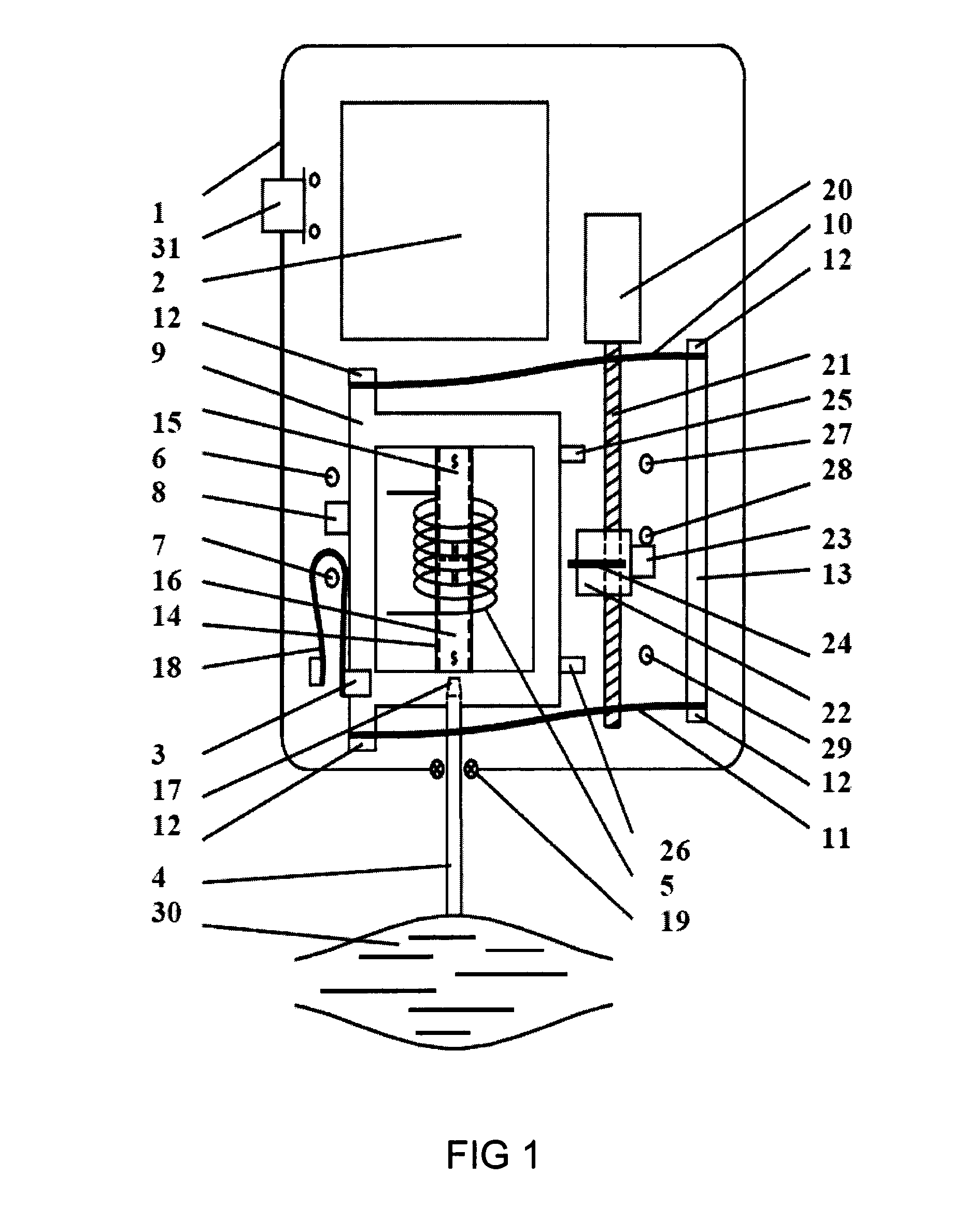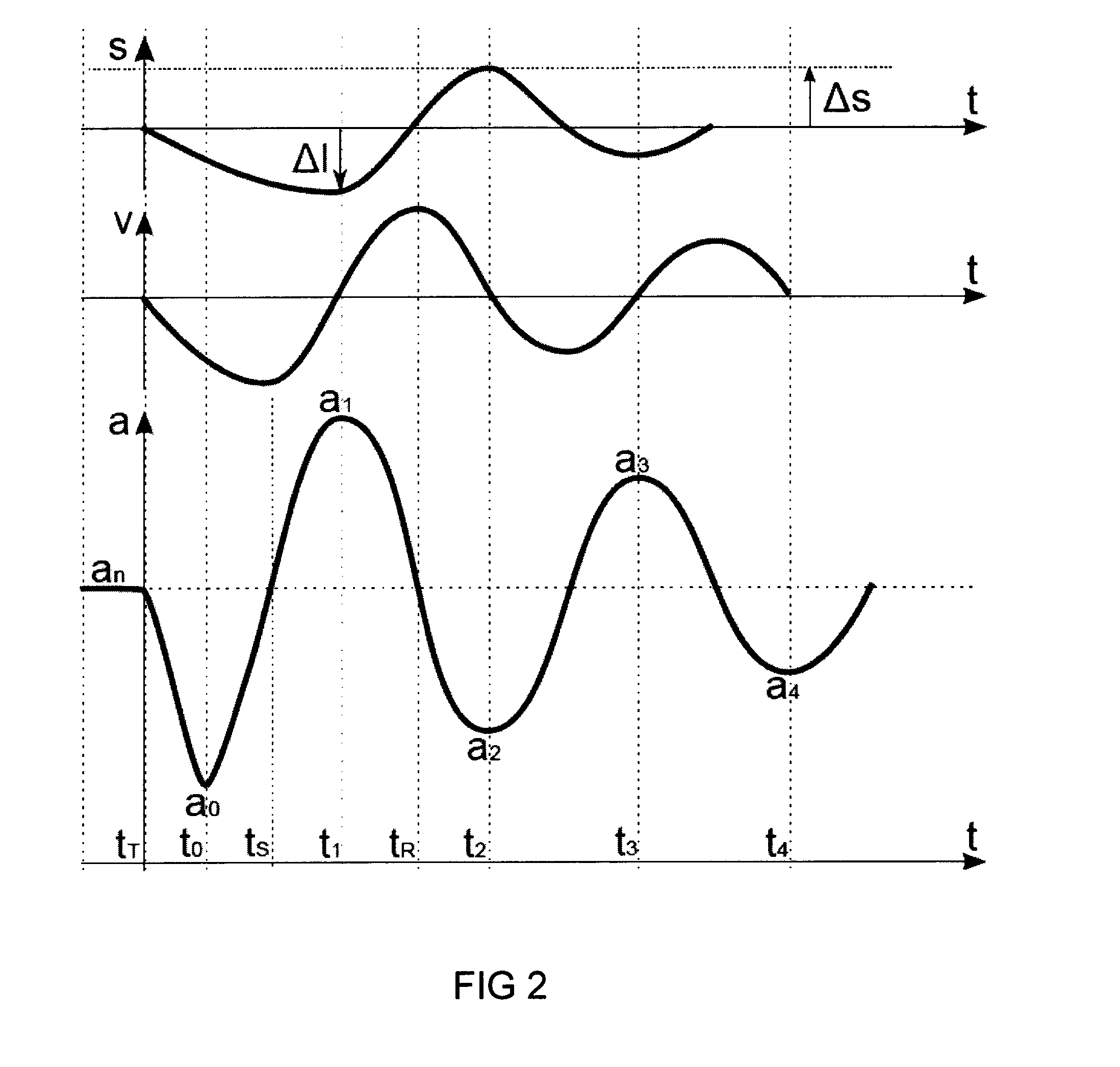Device and method for real-time measurement of parameters of mechanical stress state and biomechanical properties of soft biological tissue
a biomechanical property and mechanical stress state technology, applied in the field of medical technology, can solve the problems of slow down of venous blood outflow from the muscle, insufficient internal pressure of the muscle, and complicated mechanical stress measurement of the skeletal muscle, so as to avoid mechanical damage and facilitate assembly of the device
- Summary
- Abstract
- Description
- Claims
- Application Information
AI Technical Summary
Benefits of technology
Problems solved by technology
Method used
Image
Examples
Embodiment Construction
[0058]The device for recording the state of mechanical stress and biomechanical properties of soft biological tissues (FIG. 1) comprises the body 1, with a means at its top holding a processor and controller for monitoring the measuring process and for calculating the parameters (a control means 2), a recorder 3 and a moving frame 9 fastened to an inflexibly base 13 by an elastic element, such as elastic plates 10 and 11. The moving frame 9 incorporates a sleeve 14 containing two permanent magnets 15 and 16, whose same-name poles are oriented face to face, while the testing end 4 has been attached to the permanent magnet 16 by means of a cone-shaped end 17 made of either electrical steel or some other suitable material. To the bottom part of the moving frame 9, a acceleration sensor 3 has been inflexibly fastened and to the middle of the frame, a shutter 8.
[0059]Above and beneath the shutter 8, the position sensors 6 and 7, respectively, have been inflexibly fastened to the body 1. ...
PUM
 Login to View More
Login to View More Abstract
Description
Claims
Application Information
 Login to View More
Login to View More - R&D
- Intellectual Property
- Life Sciences
- Materials
- Tech Scout
- Unparalleled Data Quality
- Higher Quality Content
- 60% Fewer Hallucinations
Browse by: Latest US Patents, China's latest patents, Technical Efficacy Thesaurus, Application Domain, Technology Topic, Popular Technical Reports.
© 2025 PatSnap. All rights reserved.Legal|Privacy policy|Modern Slavery Act Transparency Statement|Sitemap|About US| Contact US: help@patsnap.com



